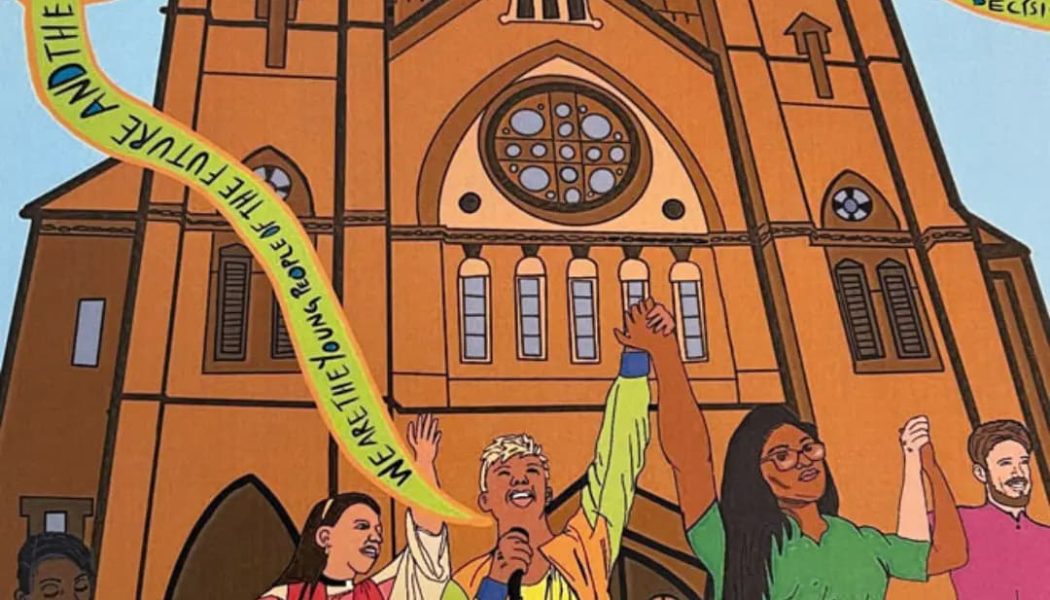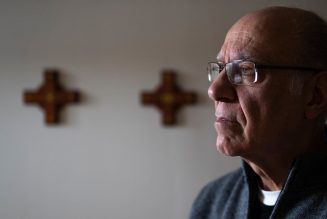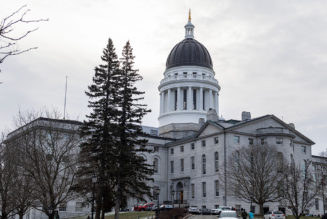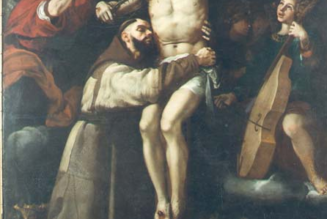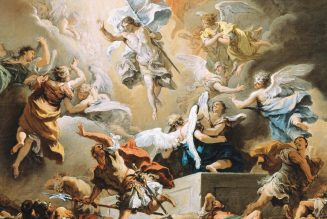
“We are in a right spot here!”
(Ulysses Everett McGill)
O Brother Where Art Thou
What follows is polemical. I make no apologies for that. Because it is also completely true.
In my youth I attended a very conservative seminary for my undergraduate formation. And I was fine with that since I too was a very conservative young man theologically, filled with the usual zeal that youthful idealism brings. It was the season of the post-conciliar antinomian insanity in the Church where it seemed as if she had become the preferred refuge for clerical dung beetles of every perversion who could not cut it in the world as a regular human being, and tired old feminist nuns with a thousand years of axes to grind. But my own diocese of Lincoln Nebraska had resisted the madness (or so it seemed on the surface to me as a naïve young man) and Pope John Paul II had just been elected, so there seemed to be hope that a young conservative Catholic such as myself could actually find a safe haven and a home in the Church.
But I was wrong. My last year in the seminary (1980-81) the Diocese of Covington, Kentucky where the seminary resided got a new, and much more liberal, “That 70’s Church”, type of bishop. What followed was an immediate purge at the seminary with many fine priest/professors getting the boot out the door, without, of course, any due process or “dialogue”. They were all replaced with very liberal priests of the “Father skippy-toes sings Broadway show tunes” variety who immediately instituted a new formation program characterized by the then popular fetishization of “openness” and “big tent dialogue”, which in turn soon led to a reign of terror where vocations were annihilated and the personal character of many seminarians assassinated. The only way to survive was to play dead and to act as if you believed in nothing. Nothing, that is, that went beyond the ultimacy of the new capo regime of gangster genitalism where, with a wink and a nod, one could find in the “new seminary” any number of cirque du soleil practioners of theatrical sexual antics. You were not allowed to openly express a love for high liturgy which was viewed as a sign of a retrograde troglodytic “rigidity”, but you were encouraged to express a love for getting high as a sign of your non-rigid openness to the world. It was, therefore, abundantly clear that not all rigidities were equal.
But what struck me the most, even at that young age, was the manipulation of language for the furtherance of this new genital Gnosticism as a legitimate “development of doctrine”. We were told in a pounding, percussive succession of re-education lectures (“Days of Recollection”!) that God was “doing a new thing” that apparently contradicted all of the “old things” that God used to do but now regrets, and that we could not be “fundamentalists” anymore since fundamentalism is one of the things God once liked but no longer does. And by “fundamentalist” they meant adhering to Church teaching in matters of sexuality and liturgy in particular or holding to a view of Revelation that was even remotely related to the notion of objective truth and propositional clarity. What was even more striking was that the words “Christ” and/or “Jesus” were very rarely mentioned and scripture was rarely quoted. “Big Tent” Catholicism was apparently just a form of euphemistic doublespeak for the blessing of the sexual revolution since in reality the tent under construction was actually much smaller than the old, traditional tent, and was really never meant for everyone, since the tent masters were exclusionary on a grand scale, similar in all ways to a bouncer outside of a posh and hip Manhattan night club for the uber sophisticated.
There was a strange and ironic ecclesiolatry going on as well since all of the emphasis was upon the Church as the generator of truth, and in this case, new truths, and not on the Church as the preserver of truths that had been gifted to her by God in Revelation. And to the extent that they did emphasize that God alone was the source of the truth of Revelation it was only to reinforce some bizarre voluntarist concept of a God who could just make crap up as he went along and as it suited him/her/they/them/it. Of course they did not really believe in any of that and it was really all just a mere cipher for dismissing the normativity of Revelation as anything binding. The more intellectual revisionists appealed to a concept of God wherein God was portrayed as a vague Hegelian gas or plasma field that permeated historical processes and only came to itself in the Heraclitan flux of a historically mediated “Being as subjectivity”. Thus was Revelation reduced from a source of actual conceptual content, no matter how rooted in mystery and poetic categories of symbolization, to a mere process or pedagogy that set in motion a dynamical movement “forward” in ever new historical permutations.
Therefore, what was true yesterday could be false today since God’s pedagogy in Revelation is characterized by a historical unfolding whereby we move from infancy to adulthood with many missteps along the way. And those missteps could include errors in the Bible and Church dogmas – errors which were the product of a more naïve and pre-scientific adolescent stage of our development and which we alone now have the vantage point from which to set them right. Because we are now, in our own minds, in the “adult” phase of the pedagogy. In other words, history as a rolling party bus of bar-hopping dynamical flux does eventually have a terminal point, and that point is us. And so the theological guild set up camp in Francis Fukuyama’s cul de sac in order to engage in an endless block party of celebratory cultural exceptionalism. The flux stops here and so does all real dialogue. There is a curve to history and it has curved straight into modern Liberalism’s garage. And now the garage door is shut.
The error in all of this is that although Revelation is indeed historically grounded and does involve a slow pedagogical unfolding of God’s gradual self-Revelation, the terminal point of that Revelation is not modern Liberalism, but the rather more shocking particularity of the Absolute Singularity of a first century Galilean Jew. And this means as well that the Church is not a generator of truth via the path of a curated reconnoitering of Liberalism’s thought-hoard, but a gradual coming to grips with the full depth of that Galilean Jew’s life as the very embodiment of God himself and the very self-exegesis of God’s logic as an infinite, internal processio in a unity of persons. Which is why there is in all modern liberal Catholic theologies a not-so-latent anti-Judaic Marcionism that plays in the sand box of a vulgarized Law/Gospel dialectic. Because in order to justify a Catholic iteration of modernity’s scorched-earth destruction of all pre-modern traditions (which are viewed as primitive stages of maturation) one has to disengage the Christ-image from its Judaic context and present it in Docetic terms as a mere avatar of God “for those iron-age, ignorant Jews” but which can now be redeployed holographically as an avatar/icon of libertine liberation from all sexual and gender restrictions. We are therefore presented with a clear choice for or against the absolute theological normativity and priority of the historically concrete Christ over and against the malleable and fungible Docetic Christ of a thousand faces.
This sense of history’s inevitable progression into modernity as the final phase of some ill-defined maturation process is not believed any longer by most modern secular intellectuals. Most of them have long since moved on from such high-minded and hortatory Enlightenment moralizing which is viewed by most now as still far too classical in its understanding of existence. They have moved instead into a cynical and merely stipulative Liberalism having no grounding in anything except our functional desire to create the social conditions necessary in order to maximize the digital transformation of our world into a techno-paradise of manufactured reality tailored to the whims of the untethered self. There is a nihilistic weariness with reason and metaphysical thought as such viewed now as just so-many epiphenomenal brain ejaculations having no purchase on reality. We are now content to rest in the shallow end of the pool which is the safe zone of techno-manipulation. It is the quiet totalitarianism of an “opposable thumb” anthropology that sees humanity’s most distinctive and defining trait as our ability to grab hold of things in order to acquire them and bend them to our immediate material needs.
But the Catholic theological guild of the post-conciliar era was too stupid to see that this is the eventual outcome of Liberalism. As a cannibalistic and parasitical entity from its birth it could only eventuate in its own nihilistic self-immolation. And when I say that these Catholic thinkers were stupid I mean “stupid” as in stupid. They were intellectually deficient and obtuse on a global scale. Just educated enough to sound like Heidegger, Kant, and Hegel, but not nearly smart enough to understand them, they proceeded to redefine Catholicism in a manner that can only be described as a different religion altogether, but still using the same symbols and terms, and through it all too ignorant to understand that this is what they were doing. Yes, yes, some of it was deliberate and calculated. But I lived through this period. I knew these people. And most of them were well-meaning, but stupid, rather than Catholic versions of Dr. Evil in his underground volcanic lair plotting the destruction of the world. They simply had grown tired of the effort required to maintain the cognitive dissonance between Tridentine Catholicism and modernity in some kind of tolerable psychological modus vivendi, and had thrown in the towel and joined the modern world as Stockholm syndrome participants. They were thus a set of conclusions in search of an argument and it did not matter if the arguments were genuinely coherent or even remotely Catholic.
These revisionist Catholic genital Gnostics continued to use words like “Revelation” but invested them with subtle new meanings. Rahner’s epigones in the chronically mediocre clerical world of the chanceries and seminaries appealed to “anonymous Christianity” and “the transcendental structure of unthematized spiritual experience” as the new privileged location for discerning God’s Revelation — a “Revelation” that could now only be teased out and understood by the Germans apparently. The Germans were fond of making sweeping generalizations about “modern man” along the lines of what it is that “modern man” can “no longer accept or believe”. In reality, all they were describing was the bourgeois Angst of highbrow culture in places like Cologne and Munich and confusing that with every culture on the planet. Which is a move you can make only if you are assuming that your own culture is somehow paradigmatic in a “cutting-edge” and normative kind of way for all others. It would seem that still to this day there are those in Germany who continue to eat the Schnitzel of Teutonic exceptionalism and to then confuse that spirit with the Holy Spirit. And once again, what is old is new again, and as it was in 1975 so it is again in 2022. Like that ugly paisley fat neck tie that has hung in your closet for decades without use but which is now in vogue again, the Germans have paused from their secular preoccupations long enough to put that Church tax to good use and to rouse the 2% of Catholics who still attend Mass there to denounce that Church in the name of the Church in the hopes of getting people back to Church.
These are complex matters and I am, of course, over simplifying. However, what I am offering is an impressionistic anamnesis of those times from one who lived through them and so you can take or leave my impressions as either truly and accurately capturing the ethos of those times or as the cranky ravings of an unreconstructed “70’s” contrarian who mistakenly thinks that it is déjà vu all over again today.
But I do think we are seeing a resurgence of a new version of this old dynamic, especially in all of the current gyrations and agitations surrounding the so-called “synodal way” that so many are promoting these days. In reality, and once again as someone who lived through it, the post conciliar Docetic, Marcionite, Gnosticism never went away and continued to live on almost everywhere in the Catholic academic guild. As a member of that guild from about 1988 forward I can attest to the fact that most of the major theological societies in North America (American Academy of Religion, The College Theology Society, and the Catholic Theological Society of America) were thoroughly and completely run by the progressive wing of the Church. I remember despairing over this fact and saying so to a trusted older theology friend who assured me that the era of the liberal hegemony was over and that guys like me would soon replace them. He was wrong. They are still to this day, some thirty five years later, as firmly in the grip of the old order as ever. Newer and more orthodox societies have emerged (e.g. The Academy of Catholic Theology) and there are increasing numbers of young and promising theological scholars. But it remains true that the ecclesial theological needle is now moving once again Leftward and in ways that are tellingly similar to the old genital Gnosticism that never really died out, but simply went underground.
We see this as well in many national episcopal conferences in Europe, Australia, Ireland, and increasingly in America owing to the red hats given by Pope Francis to prelates like Cupich, Tobin, McElroy, and Gregory. Seminaries and seminarians have drifted to the Right over the past decades but it is only a matter of time, if present ecclesial trends continue, before they revert back to the boilerplate liberal playbook of cultivating non “rigid” seminarians. Pope Francis says many wonderful things but his actions indicate a desire to tack the barque of Peter with the cultural winds instead of against them. And the few bishops that are resistant tend to be easily dismissible traditionalist blunt instruments like Bishop Strickland and Athanasius Schneider whose answer to the crisis seems to be little more than a call to return to the very Tridentine form of the Church that got us into this mess in the first place. As I have said before, lace surplices under fiddleback chasubles can mask just as much lunacy as denim Disney vestments over your Nehru jacket. My point here is that the dynamic within the episcopacy we see today is the same dynamic we saw all those decades ago and we can therefore say that we cannot look to the episcopacy for much help in the current crisis any more than we did then. It is “woke” episcopal insanity to the Left of me and tinfoil hat wingnuts to the Right of me. And so by all means, let’s have a synod with these folks leading the way.
Therefore, my claim is a simple one. Namely, that even though there are new elements in the neo-progressivism of today, that it is essentially a recurrence of the older narrative but now decked-out in the verbiage of “discernment”, “accompaniment”, “inclusion”, “listening” and “sensitivity to complex situations”. As evidence for this claim I refer you to the many statements by this pope’s most ardent supporters who now openly speak of the “interruption” of the reforms of the Council by Pope John Paul and Pope Benedict. And this narrative of the “interrupted Council” shows clearly that what they think was wrongly stalled was precisely the kind of Gnostic Liberalism that was in the ascendancy until John Paul assumed the papacy. If this were not so then what exactly was “wrongly” closed off? What was interrupted exactly? What they want is precisely to reignite the fires of that revolution and to reopen the debates over women’s ordination, contraception, intercommunion with Protestants, communion for the divorced and remarried, the legitimation of homosexual sex, cohabitation, and a greenlighting of the whole LGBTQ+IA++ world of sexual acronyms. And if you doubt this just look at Jimmy Martin’s dance card in Rome or the list of issues that the Germans, Belgians, Dutch, Australians, and Irish bishops have put forward. Cardinal Tobin just released the results of Newark’s “listening” sessions and, as I have written elsewhere, it seems as if the Holy Spirit thinks just like the ladies on The View. This is not new. We have seen it before. This is not our first ecclesial rodeo and we did not just fall off the ecclesial turnip truck yesterday. But we are being played for fools as if we do not see what is plainly in view and the sooner we start speaking frankly about all of this the better.
Their chosen method for advancing this revolution is the so-called synodal way. But from where I sit the whole fetid enterprise reeks of a fimiculous rot filled with cynical doublespeak. The synodal way looks for all intents and purposes like a set of a priori theological conclusions in search of a legitimating process. Their interest does not reside in a true reform of the juridical structures of the Church and a de-emphasis on the hyper papalism of the past 200 years. If I thought that is what they were after I would support them. But that is not what they are truly after. If they had respect for their own rhetoric concerning a more synodal Church then they would respect the synodal process, which they do not. For example, many German bishops, Cardinal Marx included as well as the head of the German episcopal conference, have stated that even though their own synodal process failed to reach the necessary two thirds super majority in support of the revolution, that they are going to go ahead and implement it in their dioceses anyway. So why did they not just do that in the first place? Because they really thought that the faux democracy of the synodal way would produce the desired results which would give them the pretext to do what they were going to do anyway, but now with the fig leaf of juridical respectability covering their apostate loins. The Belgians are moving ahead with rituals for blessing same sex unions despite its rejection by the CDF and not a peep emanates from the Vatican in protest. Perhaps if the new ritual was in Latin the Pope might intervene against such “backwardism”, but his “no enemies to the Left of me” mentality has so far kept him silent.
But perhaps this is just a small minority of secularized ecclesiastical Eurocrats that Pope Francis has simply chosen to ignore as an irrelevance. But then how to explain his appointing of the pro LBTQ Cardinal Hollerich of Luxemburg as the relator general of the upcoming synod on synodality? This is hardly “ignoring” the liberal European wing of the Church and looks instead as a genuine empowering of the same. Furthermore, if Pope Francis is desirous of a more synodal Church then why does his papacy rule through the autocratic method of motu proprio diktats from on high so frequently? Why did his Vatican depose a conservative Puerto Rican bishop (Daniel Fernandez of Arecibo) without explanation and without due process all because he did not want to use a certain seminary and that he refused to sign a joint document on the moral obligation to get vaccinated against Covid? (Read about that in “The Pillar” here) Why did they suspend the ordinations in a vocationally successful conservative French diocese and send a “visitation” team there, again without explanation? (Read about that here) Why can Pope Francis meet with NBA players and leading atheistic eugenicists but not with Cardinal Zen who he has summarily tossed under the bus? Is Cardinal Zen not worth “dialoguing” with? Are traditionalists – the main target of Traditionis custodes – not also a part of the Church? Are they too not his sheep? Are they too not on the peripheries and worthy of being in “dialogue” with? It would seem then that the freight train of dialogue travels along tracks that move in only one direction – a secular liberal one – and that the decision has been made that the synod will privilege only those voices in order to reach the already determined conclusions. “Synodality” thus emerges as a cynical game and a strategic ruse to bring in through the backdoor what you cannot simply bring directly in through the front door. It appears as a methodology of “drift” where you send Huck Finn gently and lazily down the river current rather than racing dramatically in your cigarette boat over the falls with trumpets blaring.
Once again, this is not new and we have seen it all before. There will be calls for dialogue, inclusion, diversity, openness, parrhesia, and real debate, until the desired results are reached and at that point all conversation will cease. The garage door will be closed and anyone who dissents from the neo-Montanist assertion that “God is doing a new thing” will be dismissed as bigots, reactionaries, rigid backwardists, and anti-magisterial dissenters. Theological careers will be ruined, successful pastors will be reassigned to Our Lady of Moonshine parish in dog breath USA or put in charge of the diocesan cemeteries, and seminaries will be instructed to weed out the recalcitrant obstructionists. You say I am being alarmist? Fine. Sit back, grab some popcorn and fire up the Jebena coffee and watch what happens. I doubt the progressives will get all that they want. Women’s ordination, for example, will never happen in my opinion. But in the realm of moral theology Pope Francis has already purged both the JPII Institute in Rome and the Pontifical Academy for Life and stacked those entities with moral theologians who are now openly calling for the acceptance of contraception and homosexual relations, and put in charge of them Archbishop Paglia who had himself painted into a homoerotic mural he commissioned for his Cathedral. That is not hyperbole. He did that. And everyone knows he did that. And yet Pope Francis thinks he is fit to run the Pontifical Academy for Life. So stay tuned.
So please be attentive. Pay attention to words and what they really mean since, as I said, there is an Orwellian exercise in double speak going on here. And pay attention to whatever artwork and videos the Vatican promotes as indicative of what the Synod is really all about. For example, watch this video, if you can stomach it, put out by the Vatican on the Synod. It is titled “A Church on the Move”. On the move to where? And from where? It does not say, which means that the precise point is that “movement” is happening and that this is hopeful in some way. But hopeful to whom exactly? I will give you three seconds to guess. There is constant reference in the video of the need to overcome a “static” Church, but there is never any specific example given of what they mean by this. But, once again, this is thoroughly reminiscent of the liberal revolution of the 70’s which spoke all the time of a dynamic and changing Church as opposed to that wretched static Church of dogmas and moral commands. In reality, there is no need for them to be more specific since anyone with eyes to see and ears to hear can discern what they are truly saying. In their Orwellian world of doublespeak “static” here means “orthodox teaching as it has always and everywhere been defined” and is not really a concern for a stodgy conservatism resistant to legitimate reform. And “A Church on the move” does not mean a truly pastoral Church committed to a dynamic and robust evangelical reappropriation of the faith of the ages for our times, but rather it means a Church that is going to bless the Zeitgeist in a secular register. It means Poperah Winfrey Catholicism. Finally, notice what is missing in the video? Yeah… you got it … Christ is missing. Not once is Christ mentioned. Not once the saints or the sacraments as the presence of that Christ in the here and now. Not once salvation. The one and only point of the video is that the Church is “finally” (after 2000 years of inauthenticity) “moving” and “listening”.
You can also take a gander at a recent piece of artwork which is the featured image above in this blog post, blessed by the Vatican itself via its inclusion in a press release on the Synod. It contains a woman in priestly vestments and some happy looking dude wearing a “Pride” shirt in rainbow colors. Sweet. Of all of the pieces of art they could have chosen to foreground why did the Vatican choose this piece of execrable kitsch? My guess is that it is because it advances the message that what is emerging in the Church’s “listening to the laity” is a desire for radical changes in Church teaching. Never mind that the listening is being done using thoroughly unscientific polling methods, and never mind that only about 1% of Catholics worldwide have participated in the process (if even that many), and never mind that the vast, vast, vast majority of Catholics have no idea that there even is an upcoming “big meeting on meetings” and do not give a rat’s petard one way or the other, there is a message to get out and that message is that the Holy Spirit is now speaking through the questionnaires sent out by faceless diocesan apparatchiks and which were curated by the same. Finally, please take note of the style of the art since it is paradigmatic of most of the synodal images that have thus far been released. They all look like the cartoonish ecclesiastical art of the 1970’s and I do not think that is an accident. It is just further evidence of the thought world these folks inhabit. It is the thought world of rotary phones, eight track tape players, cannabis-fueled free love, and Hans Kung. It is “Muskrat Love” and Charlie Curran.
The doublespeak is pervasive and is central to the strategy of subtle subterfuge that has been adopted. “Inclusion” means openness to modern, secular sexual morality and once adopted will eventuate in the wholesale “exclusion” of any Catholic who disagrees. “Dialogue” means allowing free rein to voices on the Left which further means a squashing and suppressing of those who want to maintain traditional orthodoxy. Therefore, it is not about “dialogue” at all but rather the policing of the public spaces of allowable speech within the Church. “Listening” means the same only in a different modality. The listening will be selective in a tendentious way and the results of the listening will be used to justify no longer listening and to let the orthodox wing of the Church know that they are not worth being listened to. “Parrhesia” means allowing settled doctrine to be openly questioned and to suppress those who think such talk is magisterially irresponsible. “Discernment” means closing one’s mind to the cruciform nature of Christian existence and the affirmation instead that some people just cannot live the Gospel. It further means that those like me who think it is possible are probably “rigid pharisees” who privilege “rules rather than real people”. As such, “discernment” means surrendering to modernity’s naturalistic anthropology and rejecting the Christian anthropology of grace elevated nature. “Accompaniment” means meeting with your overworked pastor for five minutes to get his “permission” to go to communion even though you are a cohabitating religious dilletante who only goes to Church when it suits you. It certainly does not mean therefore a directed series of serious spiritual directions with deeply serious spiritual seekers with an aim toward repentance, conversion, and newness of faith in line with Church teaching. Because that would be rigid.
Doctrines can indeed develop over time and the Church has even reversed some of her own teachings in the past. But if you look carefully at such reversals they are always the result of a christological deepening of the doctrine in question and the retrieval of those deeper elements from within the Tradition itself. It is the Church appealing to a deeper aspect of the Tradition in order to correct superficialities and distortions that have entered the Tradition. That is why I do not speak of a hermeneutic of continuity in an unproblematic and simplistic way. However, it is also true that there can be a simplistic and superficial hermeneutic of rupture which is equally problematic. I speak instead of a hermeneutic of kenosis, or a hermeneutic of the Cross, which is in reality a christocentric metric grounded in the full christological doctrine of the Church which is taken as binding and normative. I have written about this before and will do so again. But that is for another day and another essay.
My point here, and by way of conclusion, is that one can readily discern which metric a putative “reform” of the Church is adopting. Is it Christocentric and cruciform thus calling us to look at all of the Church’s doctrines, disciplines, and moral norms in a contemplative stance of radical openness to that Christ, or is it a looking away from Christ, or an eclipse of Christ made invisible and occluded by a false ideology? True reform always consists in a doubling-down on the call to sanctity and holiness. True reform always begins with a return to the saints and the Doctors of the Church. True reform points toward the Gospels and to Christ as the only true norm. True reform seeks a recuperative healing via the path of discalced holiness grounded in Christ. True reform “listens” to all of the above and does NOT simply stick its finger in the air to see which way the wind is blowing. I would humbly submit to you that any synodal process in the Church that advertises itself as a “Church on the move” away from stasis and toward some vague spirit of listening to the whisperings of modernity is a process that is not christologically grounded in any of the ways mentioned. It is a process instead which is grounded in a different “christ” altogether.
Dorothy Day, pray for us.
Join Our Telegram Group : Salvation & Prosperity
